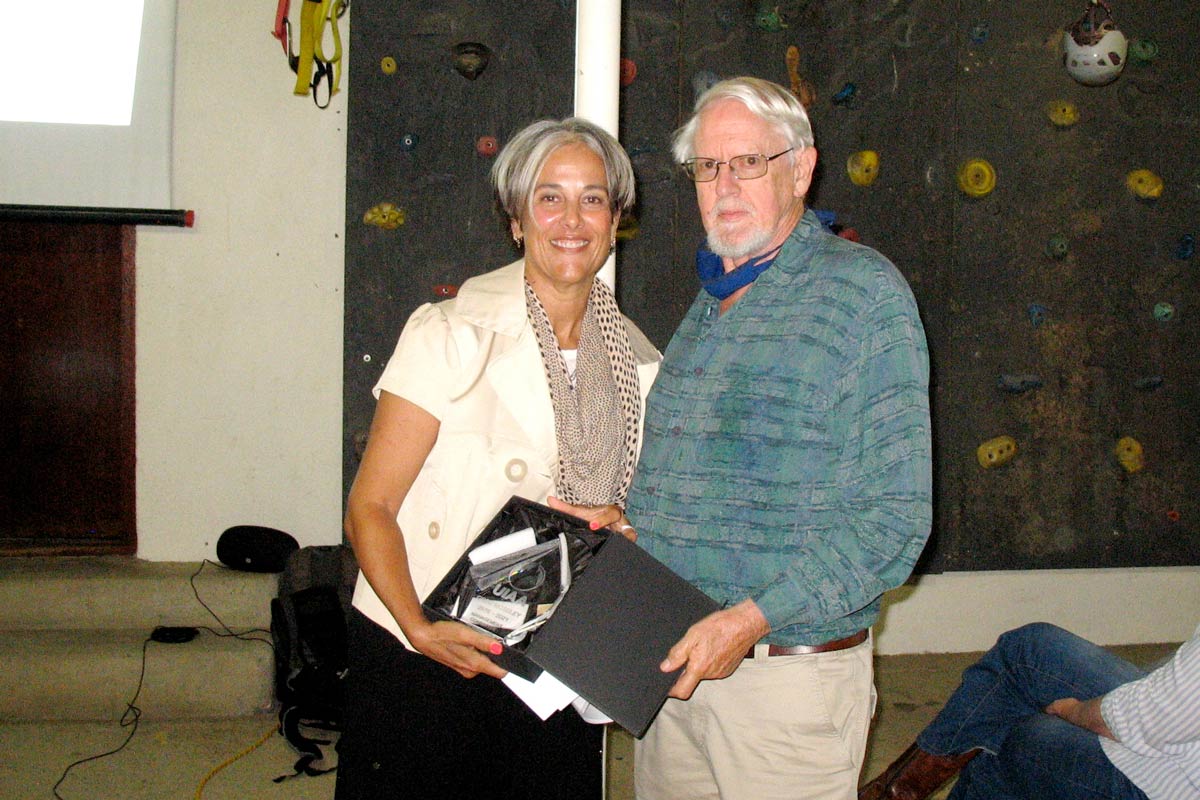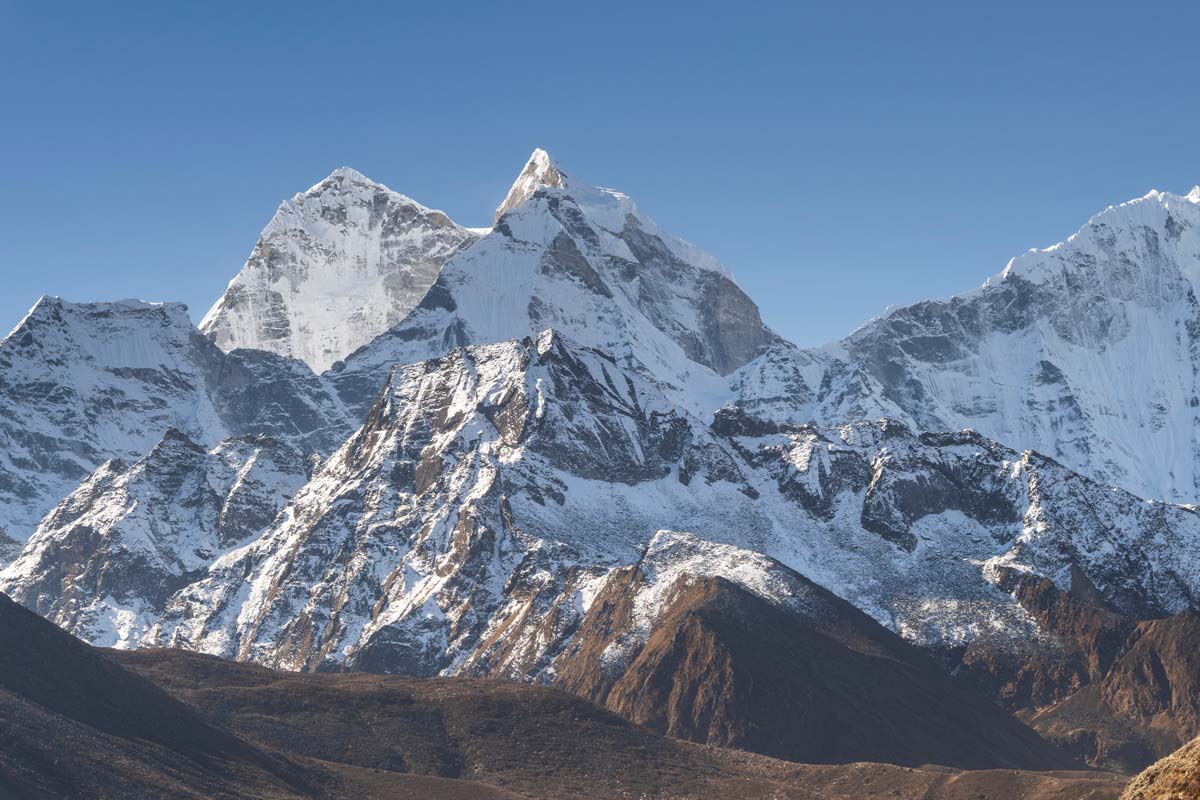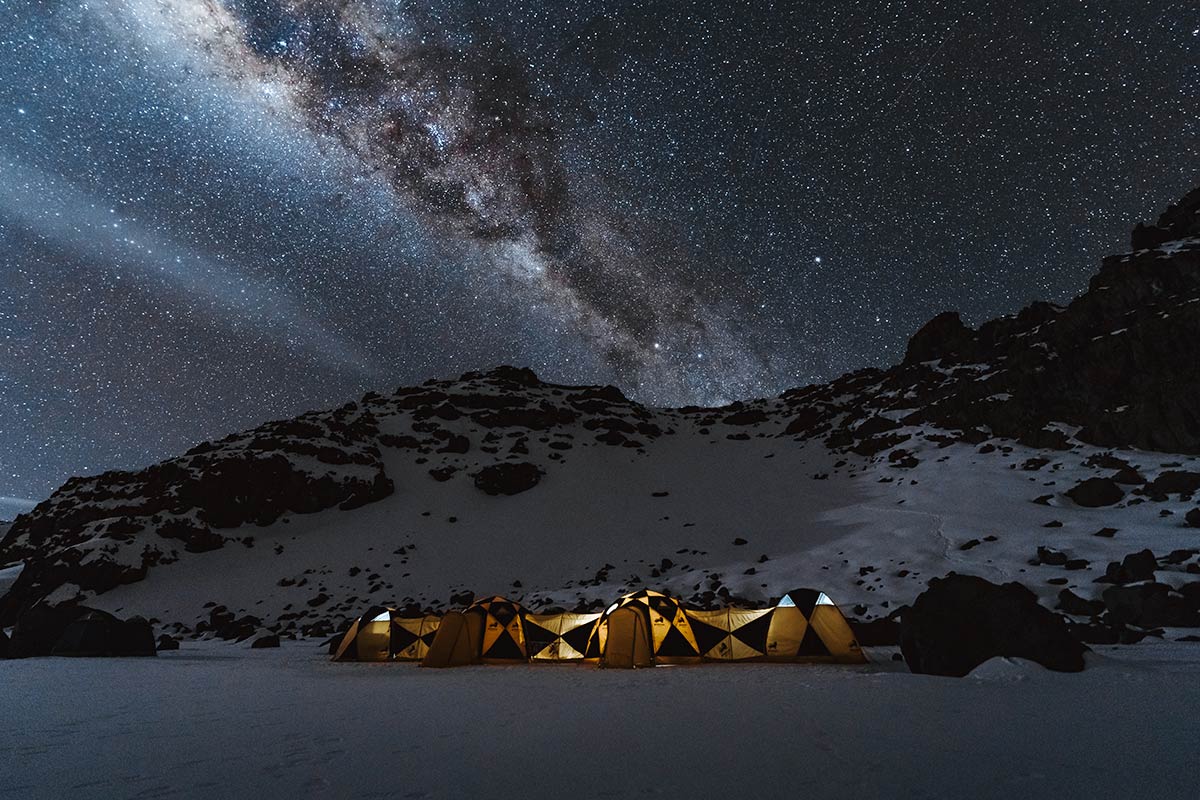An integral part of the UIAA Management Committee (MC) throughout the past five years, Greg Moseley’s term both as President of the Mountain Club of South Africa and as a Continental Representative for Africa on the MC recently came to an end. Sharing his thoughts on a significant career as a ‘journeyman climber’, on the MCSA, climbing in Africa and the role of the UIAA, Greg Moseley features as the latest profile in the UIAA Volunteer series.
How and when did you discover an interest/passion for climbing and the mountains?
It was quite early on. I was 10 or 11 (1951-2) and I was busy reading all I could on polar exploration in our local library (in Petts Wood, Kent) and I ran out of books to read – so I started on mountaineering books – Frank Smythe, Eric Shipton, Maurice Herzog – and was instantly hooked. I didn’t actually get near a mountain until I was 16 when I went on a school skiing holiday in Switzerland. I then went back to the same village the next year in summer, on my own, and saw my first glacier (Trient Glacier) and tried to climb my first mountain, Le Luisin, and failed miserably! So I then went on a climbing course at Plas-y-Brenin to learn how to climb…
Can you share details about your journey from the being raised in the UK to settling in South Africa?
Initially, I had no idea how to start climbing. My family had no interest, my father positively disliked mountain scenery! But I felt something and the skiing trip with the school gave it a kick start, that, plus leaving school early at 16 gave me a little money of my own to indulge my crazy idea.
I joined a local club and after a couple of years climbing in the UK and summers in the Alps, I met a South African guy who was living in London for a couple of years and I started climbing with him. He said that he was going back to Cape Town, why didn’t I join him? Three of them were going back overland in an ancient 1200 cc VW Kombi. So I went. It was a great trip and took about four months. I arrived in Cape Town with about $5 dollars – so I just stayed!
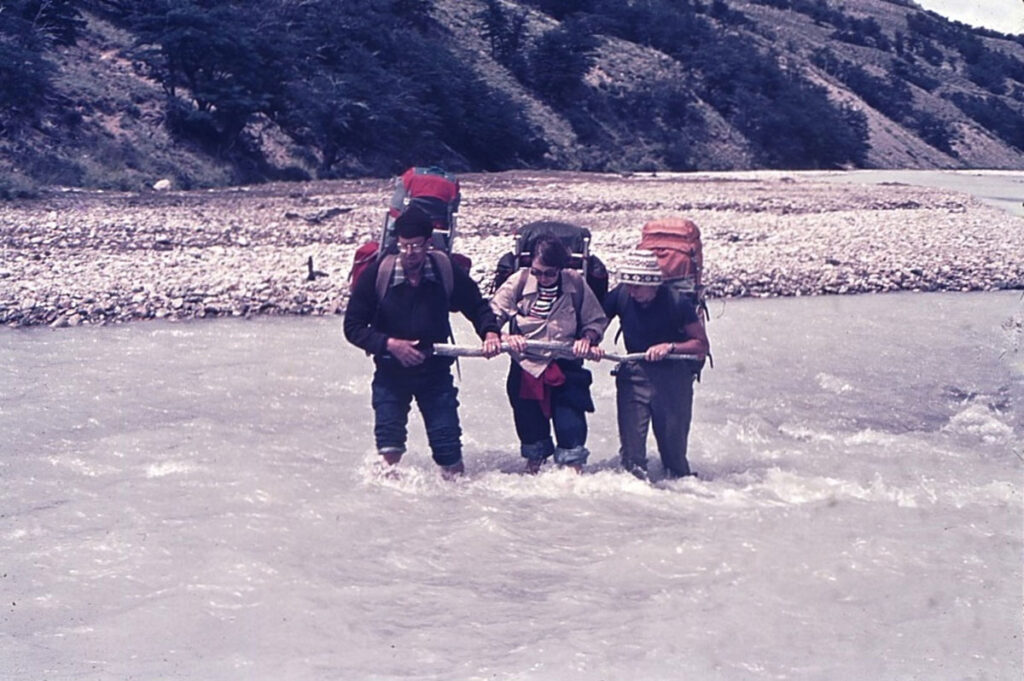
What is your professional background? Is there any relationship between that and climbing/mountaineering?
The same person I travelled to Cape Town with suggested I went to university there, so I did. Working nights and studying in the day. I took a geology degree – I had always been interested – and it seemed to fit quite well with mountains if the pictures in our text books were anything to go by. I eventually struggled through a B.Sc. in a tad over the recommended three years. In the meantime, I did a lot of climbing with the university club, went on my first big trip, overland to Tanganyika and Kenya and climbed Kili – we were the only party, five of us, on the mountain. I later completed a master’s degree at the Royal School of Mines (Imperial College, London) in 1981 – at the age of 40!
When and how did your relationship with the MCSA begin?
I joined the MCSA in 1969 (as soon as I could afford the fees!) but I already knew a lot of people because I had been climbing in and around Cape Town so much with the university club.
What do you consider to have been your biggest achievement as President of the MCSA?
That is a difficult one. I think one of my best actions – but before I was President – was ensuring access for all mountaineers to one of the real mountain wilderness areas near to Cape Town, the Hex River Mountains. I was also one of the leads in the Club’s efforts to address its past (in the Apartheid era) and make a public statement of apology to the disadvantaged communities of South Africa. As President, I think that I moved the Club out of a bit of a quiet patch and I have tried to raise the profile of the Club internationally.
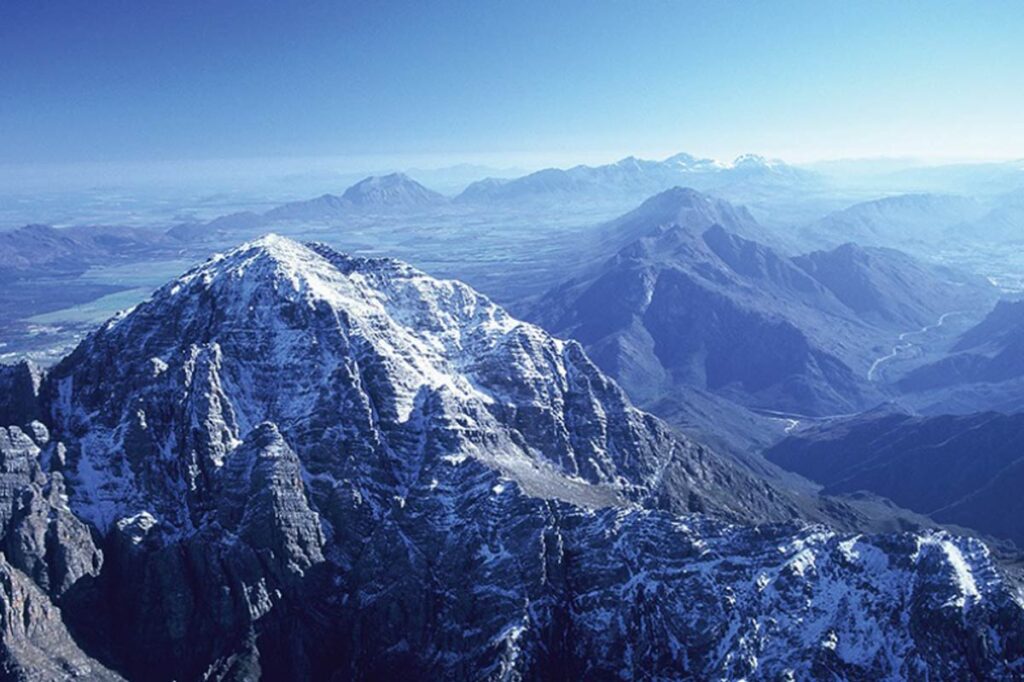
As someone who worked closely at a continental level, how do you hope climbing and mountaineering in Africa evolves over the next 10-20 years?
I would like to see the mountaineering community widen to be more inclusive over the whole continent. At this point the MCSA is by far the largest Club but the other active clubs – mainly in East Africa – have enormous potential. Just now they tend to be ex-pat dominated but this is certainly changing. We are blessed in Africa with several iconic – to use that over-rated word – mountain massifs and seeing these properly protected and open to all climbers is also a worthy aim, I think…
It will probably take a while for the other (East African) clubs to realise the advantages in being members of a global organisation and I think we need to make it easier for them to join. One way is to accept membership from “regional” organisations – such as the CAMC – such that several associations may “share” a membership. After all, the three East African clubs were originally one – the Mountain Club of East Africa. And that covered the three glaciated massifs in Africa with some very distinguished early members. I believe this is to be encouraged.
When and how did your relationship with the UIAA begin?
I have been associated with the UIAA directly for five years now. It is the custom in South Africa for the MCSA President to be the official delegate to the UIAA so I kind of slotted in there. As the MCSA is the only association in Africa to be a full member of the UIAA, the MCSA representative has automatically become the Continental Representative for Africa.
How much did you know about the UIAA before you became a volunteer?
Quite a lot. Most of the previous Presidents of the MCSA are good friends of mine so I usually heard what was happening. It seemed to me that the UIAA was what you made of it – the more you put in, the more value you get out! I think that applies to national associations as well as individuals.
In what roles have you served the UIAA?
Officially, I have been on the Management Committee as the Continental Representative for Africa. I have also served on various ad hoc working groups – Strategy, Covid and more recently the Mountain Worker Initiative (MRI). I also think that unofficially, I am the trouble-maker-in chief! All the EB and MC members who have been on the receiving end of my various missives will testify to that! I am somewhat passionate about seeing that what I understand as the core values of the UIAA protected in the face of growing commercialism. There is nothing wrong with guiding and “adventure tourism” but the values of the vast majority of mountaineers worldwide need to be respected and celebrated. To this end, I started a somewhat fluid working group on high mountain issues. Why fluid? Well, I believe the optimum way to operate a working group is to have a small core group and then to call in specific expertise as and when it is needed. It is often easier to get results with people working towards a specific target within a defined time-frame rather than having a larger group with an open-ended non-specific mandate. We have a lot of expertise in the ranks of mountaineers in general and the UIAA in particular. Let’s use it to best effect.
What has been the most enjoyable part of your association with the UIAA?
That’s easy – the people! I have made a lot of friends and met a lot of really interesting people during my time with the UIAA. No names, no pack-drill, but you know who you are!
How has the UIAA changed (if at all) during the time you have spent with the federation?
I think that is becoming more inclusive and more representative of diverse opinions – and also more activist (in a good way). There is more “listening” taking place so all opinions are being heard. This can only result in good things down the line… It is a work in progress – but the progress is good so far…
What do you believe are the biggest challenges the UIAA currently faces?
There are so many challenges facing mountaineering in today’s world. We need to be adaptable in the face of rampant commercialism and the proliferation of (often ill-informed) opinions in the (anti-)social media. Communication is key and I believe that the UIAA needs to be really pro-active in getting its message “out there”.
We also need to be very adaptable to the changing conditions in the mountains. Climate change is a reality, environmental degradation is a reality, commercial adventure tourism is here to stay (probably). We need to be cognisant of all these things (and more) and be prepared to meet challenges head-on. We need to get the word out there with as much force and persuasiveness as possible.
But we are a bit like the United Nations – there are many diverse policies and opinions in the organisation. One country’s commercial exploitation is another’s lifeline to a better life. It is not easy, but with the goodwill that prevails, I believe that we can find solutions.
As a former federation President, what do you believe are the principal benefits of being part of the UIAA? How did it benefit your own federation?
That’s an interesting question and one that I am sure that all of us involved with the UIAA are asked a lot.
I think the biggest thing, for any association, about membership of the UIAA is the sense of being part of the broader climbing community. That is one reason that I have pushed for some of the smaller clubs, notably of course, in Africa to become associated – in one way or another – with the UIAA. I think we need to realise that some of the smaller (national) clubs will always find it difficult to afford the fees that are necessarily charged for membership.
Another major advantage to membership is ability to share in the developments in equipment (through SafeCom) and also to be able to tap into the technical expertise offered by the Mountain Protection Commission.
Concomitantly, it is possible for the bigger national associations to share their knowledge and expertise with those less fortunate.
You have climbed extensively, do you have a favourite climbing area and a favourite expedition? And why?
I have been climbing for over 60 years! Obviously, Table Mountain and the other Western Cape mountains are way up there on my list:
I consider myself fortunate to have started climbing when I did, in the late 1950s and the 1960s. That timing allowed me to develop the techniques and expertise necessary to be able to take advantage of that period in the history of mountaineering – particularly as I was never a hot-shot climber in the mould of the really great climbers, much more of a journeyman. But a journeyman with some ambition and drive. So, a few highlights…
- Mount Kenya 1965 – three weeks on the mountain with four new routes by our party on the satellite peaks
- South America 1972/3 – a year-long trip for seven of us in two vehicles from Patagonia/Terra del Fuego through Argentina and Bolivia to Peru. We were meant to be keeping up with the climbing season northwards but we kept getting left behind!
Highlights were narrow failure in the Super Canaleta on Fitzroy, second ascent of the Amy couloir on Aguja Guillaumet (we thought it was the first! – the climbing magazines we read were not up to date!). First ascent of Punta Catharina in the Cordillera Darwin on Tierra del Fuego. New routes on rock at Bariloche. A bunch of early repeats in the Cordillera Blanca in Peru.
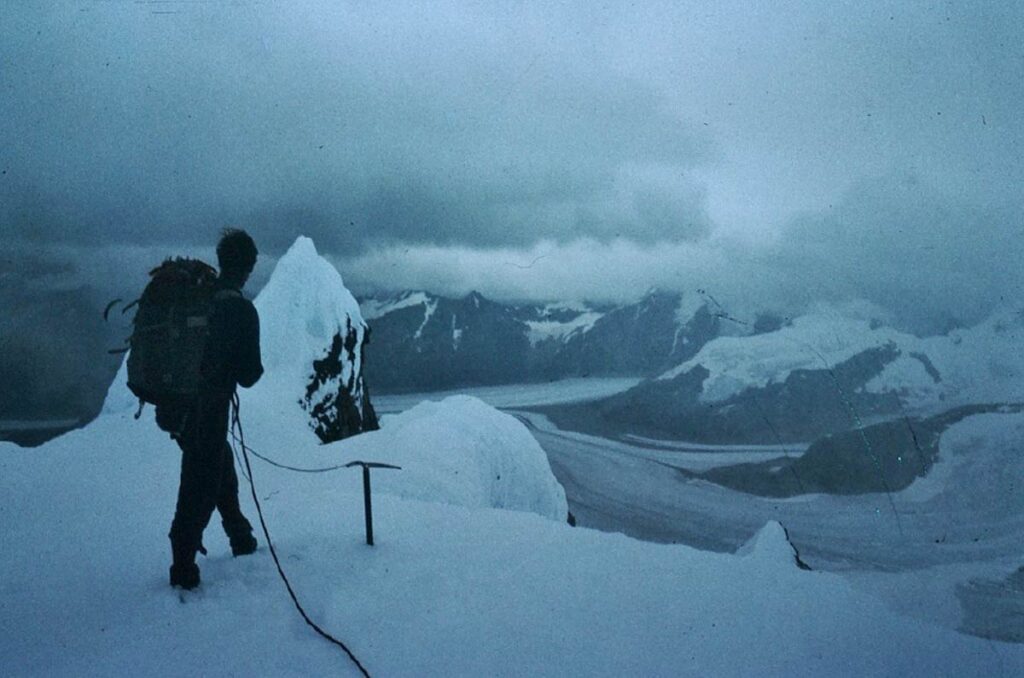
- Greenland, 1974 – our party made 21 first ascents of peaks in southern Greenland up to grade VI.
- Three further trips to Patagonia – the San Lorenzo area (two first ascents), Lago O’Higgins (Cerro Alesna first ascent) and Lago Cholila
Plus, a bunch of “lesser” trips through the years – but all great experiences!
Of these trips, I can say quite certainly that Patagonia is my absolute favourite area! Terrible weather, lots of sitting around but when the conditions come right….
You are a passionate speaker on a number of topics including recently on traditional climbing values, proposals to build a cable car on Kilimanjaro, Everest expeditions and the commercialisation of many ‘extreme’ tourism ventures. What do you see as being the biggest threats to the values of climbing and mountaineering, to mountain protection and how can the UIAA best provide guidance and advocacy on such subjects?
Apart from the existential threats, particularly to the mountain environments, but also to the entire earth and all its inhabitants – such as climate change – I think that you have hit the proverbial nail on the head in the question when you talk about “traditional climbing values” – which I believe the vast majority of mountaineers worldwide, subscribe to. The adventure tourism industry (well named as it bears an uncanny resemblance to production lines), I do see as a threat to these values although I also appreciate the benefits that the industry brings to the inhabitants of the countries concerned – viz: the MWI initiative. Somewhere, we need to strike a balance that will allow mountaineers to access the mountains freely and without “let or hindrance” while still allowing the adventure tourists to be led up the big peaks in the style of the commercial operators.
But, that adventure industry needs to be self-regulating to a greater degree in order that it is conducted safely and ethically. It will be a delicate balancing act but there needs to be some compromise on both sides of that particular coin.
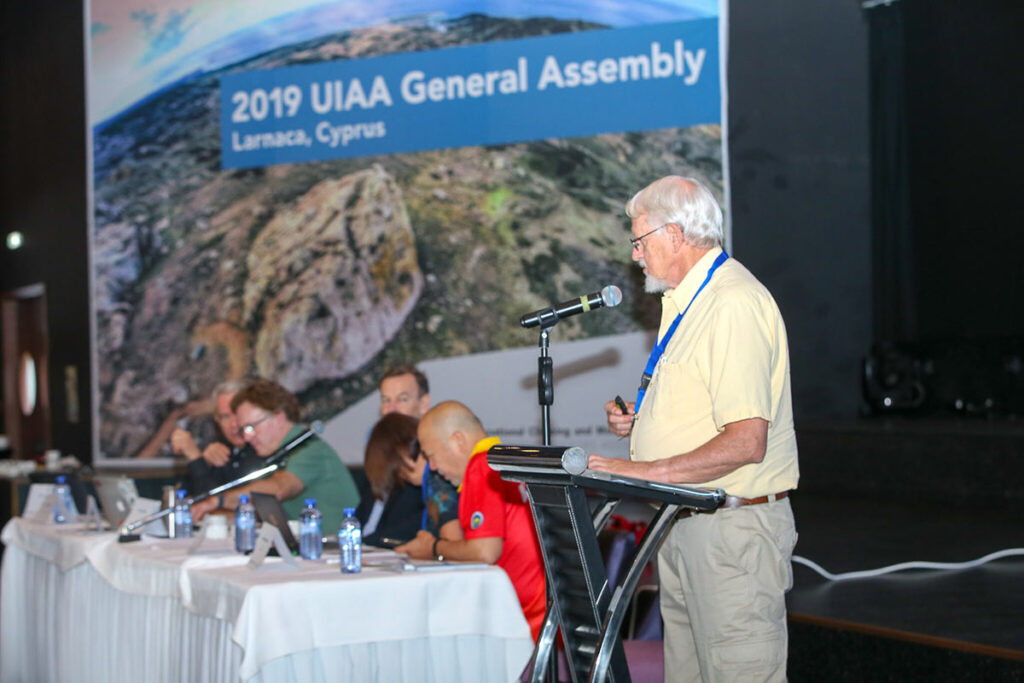
Your terms as President of the MCSA & UIAA MC member recently finished. Will you/would you like to still provide support to both organisations, and in what capacity, or are there other projects you are dedicating your time to?
Absolutely! Being the age that I am, I do feel that I should take a step back and be less directly involved. More of “I am a consultant and I am here to help”. The MCSA is big enough and old enough to look after itself now and my successor as President, Paul Carstensen, will, I am sure, make a success of his tenure as well as that of Continental Representative for Africa on the MC
There are other topics that it may be beneficial for the UIAA to develop. Early in my direct association with the UIAA, I heard the topic of the possibility of insurance for mountaineers. I know that this is possible by through a national climbing club but if the UIAA was able to negotiate insurance for its member organisations, it would be a tremendous boon
A further advantage would be a more accessible way for some of the smaller associations to access mountain huts in, e.g. the Alps, Canada, etc. Reciprocity is the term to use here but currently the system does not allow smaller clubs to access it easily. Here in South Africa, we have a number of huts, and indeed mountain areas, that are only accessible to club members and their direct guests. We would be prepared to share this privilege if we could, in return have access to the preferential rates in Alpine huts without having to subscribe to the financially punitive current system.
Main photo: Stephanie Stettbacher (UIAA Office) presents Greg Moseley with a UIAA Trophy as recognition for his service to the UIAA Management Committee. Photo: Mike Scott
OTHER ARTICLES IN SERIES
#1 – Klara Dvorakova (Czech Republic)
#2 – Lionel Kiener (Switzerland)
#3 – Pierre Humblet (Belgium)
#4 – Nikolay Primerov (Russia/Switzerland)
#5 – Buddha Basynat (Nepal)
#6 – Harshwanti Bisht (India)
#7 – Juan Jesús Ibañez Martin (Spain)
#8 – Mrika Nikҫi (Kosovo/Albania)

